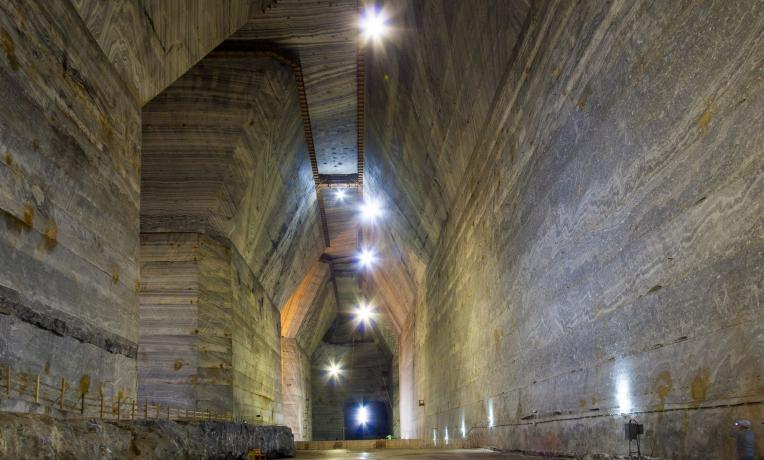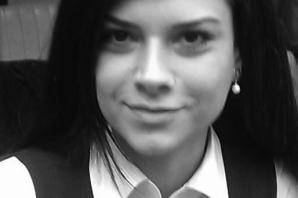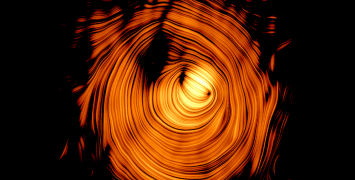Neutrinos: a salt mine of information
Alina Badescu is a young researcher, with her head in the sky and her thoughts firmly buried under layers of rock – in some of her native Romania’s most stunning salt mines. Her work focuses on neutrinos, small subatomic particles that can tell us a lot about the phenomena in the universe: the birth of stars, the explosion of supernovas, black holes.

Neutrinos are essential sources of information to understand the sky around us. But, they are also shy, travelling around without interacting with anything. It’s for this reason that the world’s largest neutrino detectors are placed in some of the most extreme geographical locations in the world, beneath the beautiful Italian Alps, under giant Lake Baikal in Siberia. These are places where the presence of a lot of mass, water, earth, raises the chances that the reluctant particles will bump into something and be detected by computers.
Dr Badescu and her small team, based at the Politehnica University of Bucharest, though, study neutrinos in a completely different environment. An electronics and telecommunications specialist by training, she decided to base her work in salt mines. These mines offer a quiet environment: no noise, no radiation activity interfering with the detection, a pure material that, for the computers, is essentially transparent. They also offered her an opportunity to stay in her own country, which has a unique wealth of these natural structures and some of the only detection facilities of this kind in the world. “I love my country, I love working here” she says. “I see that there is work to do of course. You have to make efforts to build infrastructure and train people, but it’s a good time to be working in Romania. You can really see the investment that institutions are trying to put in.”
ERC grantee Alina Badescu from @upb1818 at #ERCSTOA: ’The grant is like a passport to science. More and more scientists in Romania apply because they see it can be done.’ pic.twitter.com/dkQOOxk773
— ERC Europe (@ERC_Research) February 7, 2019
Dr Badescu teaches a lot, she is the creator of several courses and she encourages young people to stay in science and develop a career in academia, to follow their dreams. “I would definitely support young Romanians to apply for an ERC grant. There is fear, of course. Questions like 'If I apply what are my chances? Will I be rejected?’ Countries like Romania lack the tradition of success in such competitions and researchers are afraid to submit their project. But I personally look around me and I see a lot of brilliant scientists who definitely stand a chance. If you don’t apply you won’t win.”
“There are many myths about applying” she continues “Like the fact that you need to have good infrastructure or a well-established team, which of course helps. But the grant is also meant for young people who are still developing their research group.” This was also her case. Her 2016 Starting Grant has helped bring more people to her team, and buy major equipment. “Now things are coming together. Once you have such a grant you have recognition. It’s a snowball that grows bigger and bigger and I am very grateful, not only for the scientific developments but also for the personal opportunities that it has offered.”
Biography
Alina Badescu received her PhD in 2011 and is currently an associate professor at the Department of Telecommunications at the University Politehnica of Bucharest. She has conducted several international research projects involving the radio detection of cosmic particles in various media. She focused on antennas in solid dielectrics characterization, on the propagation of radio waves in heterogeneous media and the implications of the construction of a cosmic neutrino detector in a salt dome. Other research interests include antenna design, radiowave propagation through the atmosphere, etc. She has authored and coauthored over 50 peer-reviewed journals, conference papers and several books.






